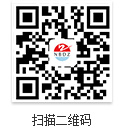The report of the 19th National Congress of the Communist Party of China pointed out that socialism with Chinese characteristics has entered a new era, and the main contradictions in our society have been transformed into contradictions between the people’s growing needs for a better life and the development of inadequate imbalances. Satisfying the "people's growing needs for a better life" is the core driving force for promoting high-quality development of the industry. To promote the high-quality development of the textile industry, innovation is an important focus.
Since the 18th National Congress of the Communist Party of China, China's textile industry has taken structural reforms on the supply side as the main line, and has intensified quality reform, efficiency reform, and power reform, and maintained a stable, healthy and sustainable development trend. The data shows that from 2013 to 2017, the income of the main business of China's textile industry regulations increased from 63,759.86 billion yuan to 68,935.65 billion yuan, and the profit amount increased from 350.605 billion yuan to 376.88 billion yuan. The industrial structure continued to improve, the industry's independent innovation capability, technical equipment level and product development capability were greatly improved. The international product competitiveness and industry influence continued to increase, intelligent manufacturing was promoted in an orderly manner, and business innovation flourished. The textile industry is transforming from traditional industries and labor-intensive industries to technology industries, fashion industries and advanced manufacturing industries.
In this process, the innovation drive has accelerated the coordinated development of industrialization and urbanization. Taking the wool textile industry as an example, the structural adjustment continues to deepen and the growth momentum is more diverse. The eastern region has accelerated its high-end extension to the value chain of cultural creativity, and the central and western regions have gradually expanded toward intensive processing and high value-added products. Enterprises have developed towards production and service, and have shifted to quality and efficiency.
At present, it is a crucial period for China's textile industry to develop into a medium-to-high-end, from a "big textile country" to a "textile power." We should work hard to solve the large number of imbalances and inadequate problems accumulated in the extensive development of the textile industry. Unbalance is first manifested in the imbalance of industrial structure. While meeting the needs of people wearing garment covers, the demand for other textiles in people's lives is far from satisfactory. At the same time, the textile industry still has an imbalanced state of regional structure, enterprise structure, infrastructure, and product structure. Insufficient, it is mainly reflected in the integration of manufacturing, textile industry and cultural industry is not enough. The consumer's requirements for the personalization and customization of textiles and clothing reflect the people's spiritual needs for a better life. In the new era, fully satisfying consumers' demand for beauty is the key to solving the problem. The textile industry is a wealth-rich industry, but in the precise poverty alleviation work, the role of poverty alleviation has not been fully exerted; the textile industry is a green industry, but its role in green manufacturing has not been fully reflected. To solve these inadequate and unbalanced problems, innovation is an inevitable move.
To promote the high-quality development of the textile industry and achieve the goal of “a textile power”, we must focus on innovation as a guide and science and technology innovation, ensure innovation through mechanism, continue to implement key breakthroughs, and continuously consolidate the foundation of the fashion industry.
First, adhere to the interconnected and inclusive, and open up a new pattern. It is necessary to coordinate and promote the “introduction” and “going out” of the industry, strengthen the open cooperation of innovation capabilities, actively promote cross-border flows of resources such as products, production capacity, technology, capital, and talents, and fully integrate and utilize global resources to achieve coordinated development.
The second is to persist in the drive of innovation and inject new kinetic energy into science and technology. Strengthen product innovation, strengthen key common technologies and leading edge technology research and development, improve the application of relevant results in products, enhance product development capabilities; promote model innovation, rely on Internet of Things, big data, AI and other technologies to continuously change production models and operating models To promote the industry's intelligent and service-oriented transformation; optimize the innovation environment and gather innovative resources, not only to enhance the ability of independent innovation, but also to strengthen the ability of collaborative innovation.
The third is to adhere to inclusiveness and lead new development with fashion. It is necessary to base on the genetic roots of culture, deepen the exploration, research and application of cultural elements, enrich product categories, and enhance cultural values, aesthetic values, and market values. A new fashion value proposition is derived from the collision of communications. Relying on clusters and other innovative carriers and high-quality windows, the cultural wisdom of all parties in Heiner, building a common language, and the new development of the textile industry with the new connotation of fashion.
The fourth is to adhere to green development and create a new space for development with green. With green raw materials, green design, green production, and recycling applications as the starting point, we will establish responsible R&D systems, procurement systems, production systems, and logistics systems to enhance sustainable development capabilities; strengthen the concept of green low-carbon recycling development, and deepen environmental responsibility and Market responsibility. At the same time, we will seize the strategic opportunity of “One Belt, One Road” construction, integrate green value into international marketing, and continuously expand the new space for the development of the textile industry.


 Mr. Chen Fei (Mr.)
Mr. Chen Fei (Mr.) 86-574-63550733
86-574-63550733 86-574-63551022
86-574-63551022 dz@dzfibre.cn
dz@dzfibre.cn



